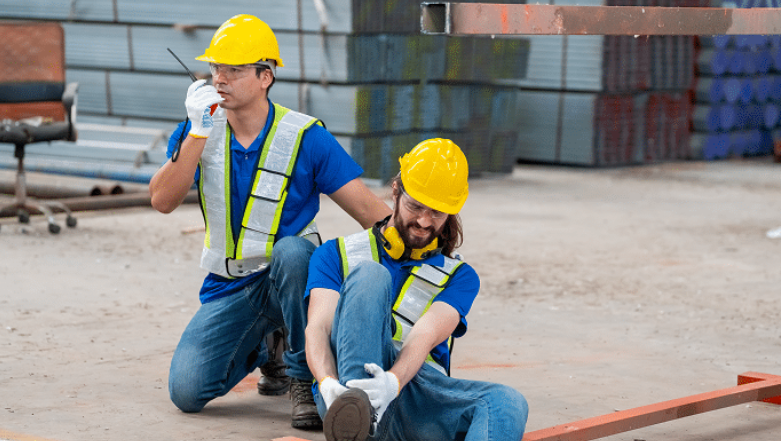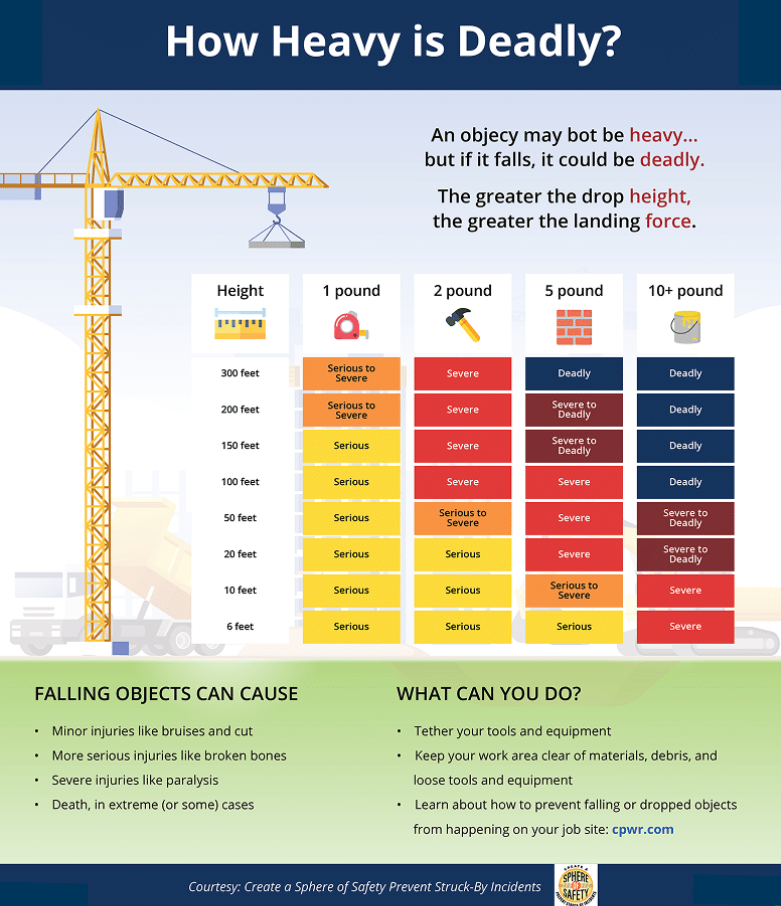Types of Industrial Accidents
Industrial workers face daily risks of serious injuries and death from multiple types of industrial accidents, including motor vehicle accidents, machinery-related incidents, fires and explosions, toxic exposures, electrocutions, overexertion, falling objects, and falls. Industrial accidents are common in Texas, but they are almost always preventable. If you or a loved one has been injured in an industrial setting, our experienced Texas industrial accident lawyers can help you secure financial compensation from the parties who neglected workplace safety.
Home » Texas Personal Injury Lawyer » Texas Industrial Accident Lawyer » Types of Industrial Accidents
- Content Reviewed by:
- Judson A. Waltman
- Page Last Updated:
- November 20, 2025
Navigate This Page
- Transportation Accidents and Injuries
- Machinery-Related Accidents
- Fire and Explosions
- Exposure to Chemicals and Hazardous Substances
- Electrical Accidents and Injuries
- Overexertion and Repetitive Stress Injuries
- Falling Objects and Crush Injuries
- Slips, Trips, and Falls
- Contact Our Talented Industrial Accident Lawyers in Texas
- FAQs About Industrial Accidents
An industrial accident injury can leave you with lifelong disabilities, overwhelming medical bills, and a lifetime of lost earnings. Industrial workers deserve a safe workplace, but employers, equipment manufacturers, and maintenance companies often cut corners, leaving workers at risk. In 2023, 526 industrial workers in private industries in Texas died from industrial accident injuries, according to the Bureau of Labor Statistics.
The Texas Department of Insurance has determined that 1.8 percent of Texas workers in private industries were injured in 2023. While this is lower than the national average, it still translates to 175,900 workplace injuries that year alone. The most dangerous industry was transportation and warehousing, with a 3.6 percent injury rate. The Occupational Safety and Health Administration sets safety standards for every type of workplace. Injuries occur when employers, manufacturers, and others fail to follow basic safety protocols.
1. Transportation Accidents and Injuries
According to the Bureau of Labor Statistics, 246 Texas workers died in transportation accidents in 2023, accounting for 44 percent of all workplace fatalities in the state. These accidents are especially prevalent in the transportation and warehousing and construction industries.
The transportation and warehousing sector includes industries that ship cargo, transport passengers, and warehouse and store goods. Transportation and warehousing accidents occur on the roads during deliveries or while trucks are backing into loading docks to load and unload.
Construction workers have the highest incidence of transportation accidents. Construction sites are often chaotic as workers share space with trucks that have large blind spots and moving parts. Meanwhile, road construction workers are commonly injured from being struck by passing vehicles. Employers could prevent accidents by providing mandatory safety training, regular breaks to prevent fatigue, and preventive vehicle maintenance.
2. Machinery-Related Accidents
Industrial machinery has moving parts that spin, slide up and down, or move in a continuous line. Machines have sharp parts that can cut, bore, and puncture. When workers come into contact with machinery in the wrong way, they suffer crushing injuries, amputations, and broken bones. According to the Bureau of Labor Statistics, 27 workers died from being struck, caught, or compressed by running machinery, and 12 died from being struck by rolling machinery. Workers encounter machinery in oil rigs, factories, and warehouses.
Machinery accidents often occur when workers attempt to fix malfunctions. Hazardous mechanical failures can be prevented through inspections, preventive maintenance, safety training, machine guards, and restricted access to maintenance areas. Manufacturers and maintenance companies may be liable for heavy machinery accidents.
Conveyor Belt Accidents
Conveyor belts are dangerous machines with multiple pinch points and constantly moving parts. Conveyor belt accidents may lead to amputations and crushing injuries. They are most common in sawmills, agricultural job sites, and factories. Workers experience conveyor belt accidents when conveyors malfunction or while attempting to clear jams and repair malfunctioning equipment. Slips and falls also cause many conveyor belt accidents.
Conveyor belt accidents are almost always preventable. Manufacturers and employers can protect workers from injuries by providing guards to cover moving parts, training workers to operate conveyors safely, and prohibiting loose clothing, hair, or jewelry. Employers and manufacturers have a duty to provide appropriate safety training and enforce policies and procedures to prevent conveyor belt accidents.
Forklift Accidents
Forklifts are common in distribution centers, logistics hubs, and construction settings. They have large moving parts and can drive in multiple directions. Some have zero-turn capabilities, which allow sudden directional changes. Their high center of gravity makes them prone to rollovers. Workers may experience crushing injuries, broken bones, and amputations as a result of forklift accidents. Our Texas forklift accident lawyers have worked in many types of cases, and the most common accidents they encountered include dropped pallets, pedestrian collisions, and rollovers, among others.
In 2018, 310 Texas workers were injured in forklift incidents, including five who died. More than 25 percent required hospitalization for more than 31 days. OSHA reports that 70 percent of forklift accidents could be prevented. Employers are responsible for creating a safe work environment around forklifts. Companies can prevent accidents by providing smooth, even surfaces, enforcing slow driving speeds, and erecting barriers between pedestrians and forklifts.
Crane Accidents
Fifty people died in Texas crane accidents from 2011 to 2017, the highest of any state. Most crane fatalities occur in the construction, manufacturing, and material-moving industries. Cranes expose workers to extreme heights, pinch points, and large moving parts. Unstable loads, adverse weather conditions, and inadequate protective equipment endanger workers on the ground and in the operator’s cab. Workers may be injured by falling objects, crane collapses, collisions, and contact with power lines. Crane accidents commonly result in crushing injuries and amputations.
Multiple parties, including manufacturers, property owners, and maintenance companies, may be liable for crane accidents. These parties can prevent most crane accidents by maintaining horns and warning lights, training workers to avoid sudden changes in direction, and requiring workers to transport loads only in areas clear of workers on the ground.

3. Fire and Explosions
The Bureau of Labor Statistics reports that 11 workers died in fires and explosions in Texas in 2023. Workers who survive fires and explosions may be left with lung damage, hearing damage, eye injuries, internal bleeding, and permanent scarring.
Any process that generates heat through friction increases the risk of fire. Metal work generates sparks and involves equipment that heats metals to extreme temperatures. Workers in the oil and gas extraction industry and the chemical industry work around flammable liquids and chemicals that can explode or catch on fire with even the slightest spark.
Oil rigs, metal manufacturing facilities, sawmills, chemical plants, power plants, and food manufacturing facilities rely on multiple processes that expose workers to fire hazards. These businesses can prevent fire and explosion accidents by maintaining appropriate ventilation systems, controlling dust, and eliminating ignition sources.
4. Exposure to Chemicals and Hazardous Substances
Chemical exposure can cause burns, eye injuries, lung damage, and cancers that develop months or years later. Chemical plants, oil rigs, factories, and warehouses are hot spots for hazardous chemical exposures. Multiple everyday substances workers handle contain toxic chemicals, including pesticides, herbicides, solvents, heavy metals, and asbestos materials. In 2023, 17 people in Texas died from exposure to harmful substances, according to the Bureau of Labor Statistics.
If you have been harmed by a hazardous substance, a toxic exposure lawyer in Texas can help you recover compensation from manufacturers, distributors, and negligent parties who fail to follow safety precautions to prevent such exposures. Manufacturers can prevent chemical exposures by providing clear and complete instructions and warnings. Employers and contractors can prevent toxic exposures by storing and labeling chemicals appropriately, training employees on their safe use, and providing personal protective equipment.
5. Electrical Accidents and Injuries
Electrocution occurs when workers make contact with energized power lines, ungrounded devices, or faulty equipment. It can cause serious burns, heart damage, and neurological injuries. Some workers suffer head trauma and bone fractures from being thrown in response to the electrocution.
According to the Bureau of Labor Statistics, electrical accidents caused 22 deaths in Texas in 2023. Power plants, construction sites, and oil rigs are high-risk environments for electrocution due to exposed electrical wiring and high-voltage areas.
Manufacturers, site owners, and employers can prevent electrical accidents by performing regular equipment inspections, restricting employee access to high-voltage areas, and enforcing strict lockout/tagout policies and procedures.
6. Overexertion and Repetitive Stress Injuries
Overexertion injuries include muscle sprains and strains, herniated discs, and repetitive stress injuries like carpal tunnel syndrome. Body response injuries commonly affect the back, neck, knees, and wrists. Overexertion is one of the most common types of industrial accidents because the jobs are physically taxing. Constructions, manufacturing, mining, and oil and gas extraction occupations have some of the highest incidences of body response injuries.
The Bureau of Labor Statistics has found that nearly 93 percent of construction workers performed duties that required medium or heavy strength. Not surprisingly, in 2020, 3,950 construction workers in the United States suffered overexertion injuries. The Mining Safety and Health Administration found that 20 percent of lost-time injuries among mine workers were back injuries. In Texas, 21,350 workers suffered overexertion injuries that led to missed days, job transfers, and work restrictions. Another 2,970 workers suffered repetitive motion injuries that led to restricted duty.
Employers could prevent these injuries by providing ergonomic work stations, training workers in proper body mechanics, and facilitating frequent breaks from strenuous work.
7. Falling Objects and Crush Injuries
Falling objects pose a serious threat to workers in warehouses, factories, oil rigs, and construction sites. Heavy objects can fall from unguarded edges, improperly loaded cranes and forklifts, roofs, and overhead walkways. Falling objects can lead to serious and often fatal crush injuries. Workers who survive may be left dealing with traumatic brain injuries, spinal cord injuries, and permanent disabilities.
The Bureau of Labor Statistics recorded 22 fatal injuries in Texas in 2023 from falling objects and 37 from propelled, falling, or suspended objects. Twelve injuries occurred from collapses and engulfments. Job site owners, employers, and contractors are responsible for worker safety and preventing crush injuries. They can prevent most crush injury accidents by providing safety training, installing toeboards or guardrails along the edges of overhead walking areas, and requiring workers to store materials several feet from working edges.

8. Slips, Trips, and Falls
Slips, trips, and falls in the workplace can lead to broken bones, head injuries, and spinal cord injuries, particularly when workers fall from scaffolding, ladders, roofs, and cranes. According to the Bureau of Labor Statistics, 92 workers died from slip-and-fall accidents in Texas in 2023. Slips, trips, and falls are common in the construction, oil and gas, and material-moving industries.
Slips, trips, and falls occur because of trip hazards, defective ladders and scaffoldings, and wet or slippery surfaces. Businesses can prevent many slip, trip, and fall accidents by installing guard rails in high places, requiring workers to wear fall protection equipment, and regularly inspecting ladders and safety equipment.
Our slip and fall injury lawyers can help you pursue financial compensation if you or a loved one has been injured in an accident.
Contact Our Talented Industrial Accident Lawyers in Texas
Industrial workers have a right to safety on the job. If you have been injured in any type of workplace accident, you may be eligible for compensation from multiple sources. We have over 35 years of experience standing up to large companies, and our case results include nearly $20 billion in settlements and verdicts.
Our experienced industrial accident attorneys can investigate your accident, advise you of your legal rights and options, and help you pursue the compensation you deserve. We charge no upfront fees, and you pay nothing unless we win. Contact the Lanier Law firm online today or call 800-723-3216 to schedule your free consultation.
FAQs About Industrial Accidents
What Should I Do After Being Injured in an Industrial Accident?
If you have been injured in an industrial accident, take the following steps:
- Seek immediate medical attention.
- Report the accident to your supervisor.
- Continue your treatment until your doctor releases you, and attend all medical appointments.
- Get contact information for any eyewitnesses.
- Obtain a copy of the incident report.
- Journal the details of your accident, and include the time, date, and conditions that contributed to the accident.
- Stay off social media and avoid discussing your accident with others
- Retain copies of your medical billing receipts, test results, and prescription records related to your injuries
Contact our knowledgeable industrial accident lawyers as soon as possible.
What Are the Legal Implications of Industrial Accidents?
If you were injured as an employee on a job site, you likely qualify for workers’ compensation. Workers’ compensation provides partial wage replacement and medical care for work-related injuries and illnesses regardless of fault. However, workers’ compensation does not offer compensation for non-economic losses, such as pain and suffering. These losses can be significant.
You generally cannot sue an employer covered by workers’ compensation in Texas. Fortunately, you may be able to file a third-party lawsuit against outside companies, such as contractors, property owners, and manufacturers of defective equipment. When you contact our industrial accident lawyers, we will thoroughly investigate your accident, determine the cause, identify the liable parties, and pursue the full damages you are owed.
How Does OSHA Define a Recordable Injury or Illness?
Recordable injuries are work-related injuries or illnesses that employers must report to OSHA. OSHA considers an injury or illness recordable if it results in one or more of the following:
- Death
- Days away from work
- Restricted work duties
- Transfer to another job
- Medical treatment beyond first aid
- Loss of consciousness
- Diagnosis of a significant injury or illness by a licensed health care provider

Judson A. Waltman specializes in personal injury, product liability, and maritime law. He secured one of the largest verdicts in Ward County, Texas, for an injured oilfield worker and a $2 million verdict for a Central Texas worker. Recognized by Best Lawyers for Personal Injury and Product Liability Litigation (2024-2025).





















